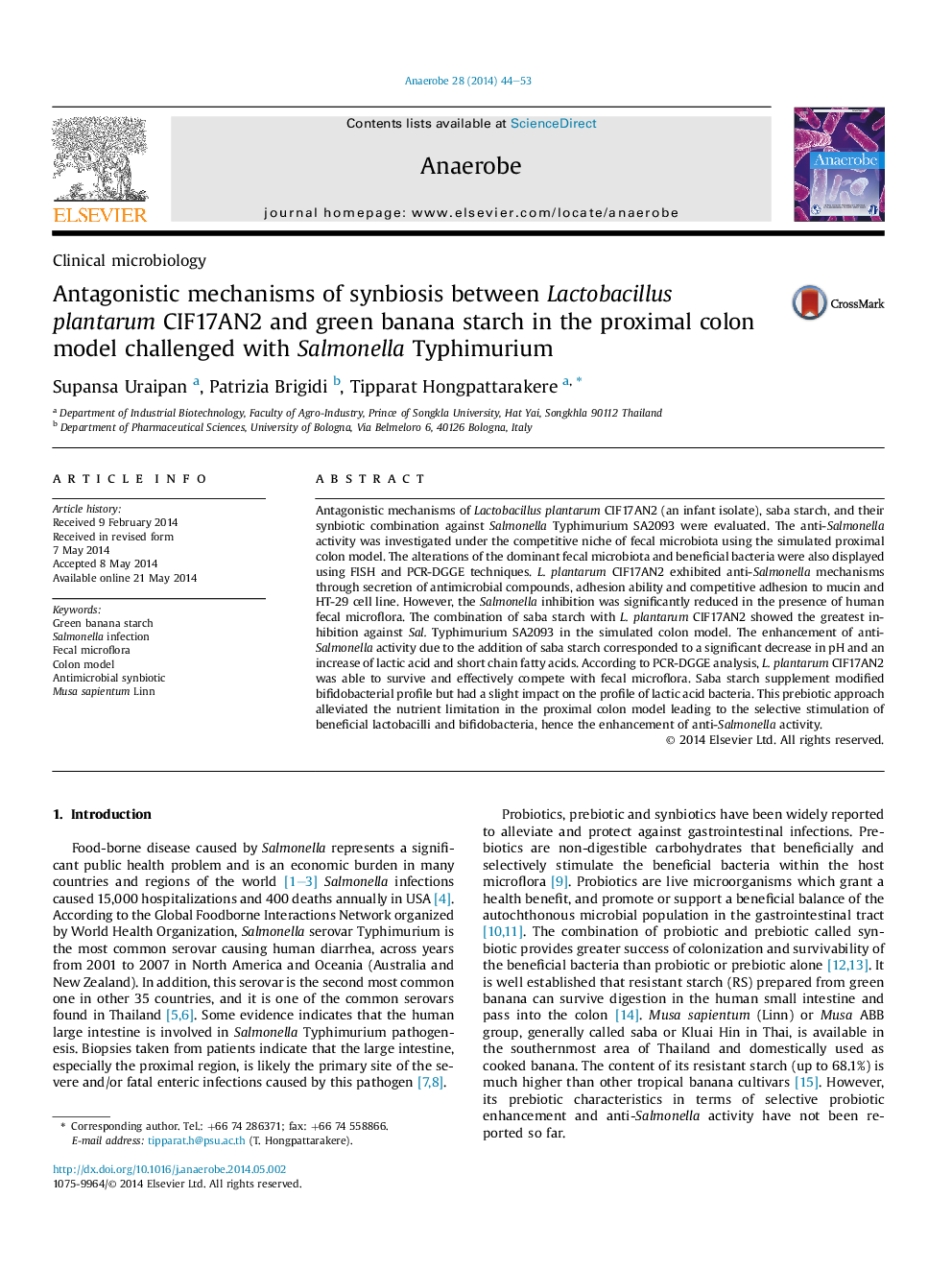| Article ID | Journal | Published Year | Pages | File Type |
|---|---|---|---|---|
| 6128680 | Anaerobe | 2014 | 10 Pages |
Abstract
Antagonistic mechanisms of Lactobacillus plantarum CIF17AN2 (an infant isolate), saba starch, and their synbiotic combination against Salmonella Typhimurium SA2093 were evaluated. The anti-Salmonella activity was investigated under the competitive niche of fecal microbiota using the simulated proximal colon model. The alterations of the dominant fecal microbiota and beneficial bacteria were also displayed using FISH and PCR-DGGE techniques. L. plantarum CIF17AN2 exhibited anti-Salmonella mechanisms through secretion of antimicrobial compounds, adhesion ability and competitive adhesion to mucin and HT-29 cell line. However, the Salmonella inhibition was significantly reduced in the presence of human fecal microflora. The combination of saba starch with L. plantarum CIF17AN2 showed the greatest inhibition against Sal. Typhimurium SA2093 in the simulated colon model. The enhancement of anti-Salmonella activity due to the addition of saba starch corresponded to a significant decrease in pH and an increase of lactic acid and short chain fatty acids. According to PCR-DGGE analysis, L. plantarum CIF17AN2 was able to survive and effectively compete with fecal microflora. Saba starch supplement modified bifidobacterial profile but had a slight impact on the profile of lactic acid bacteria. This prebiotic approach alleviated the nutrient limitation in the proximal colon model leading to the selective stimulation of beneficial lactobacilli and bifidobacteria, hence the enhancement of anti-Salmonella activity.
Keywords
Related Topics
Life Sciences
Immunology and Microbiology
Microbiology
Authors
Supansa Uraipan, Patrizia Brigidi, Tipparat Hongpattarakere,
